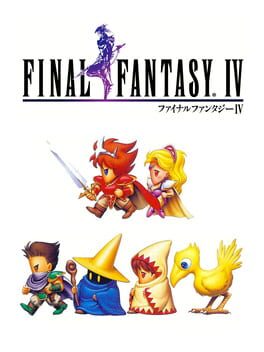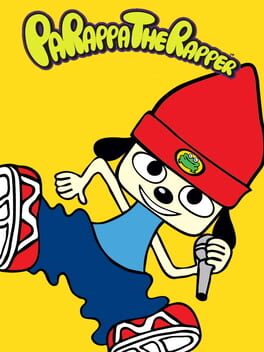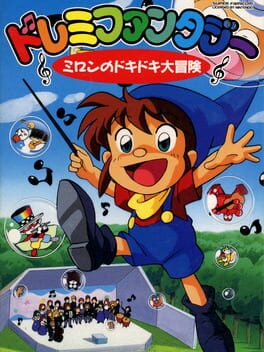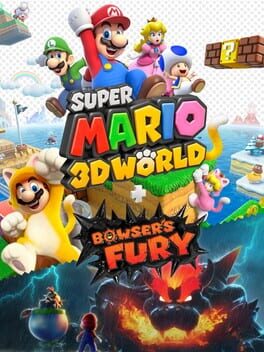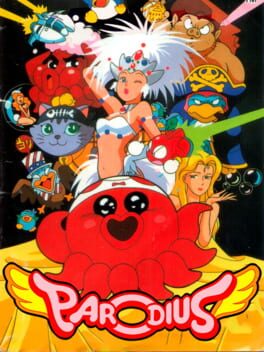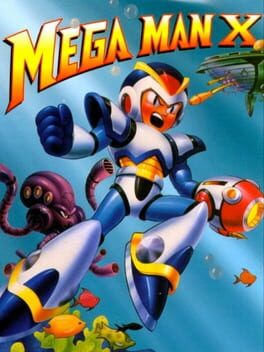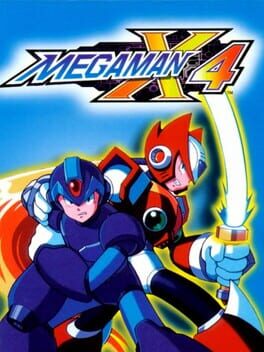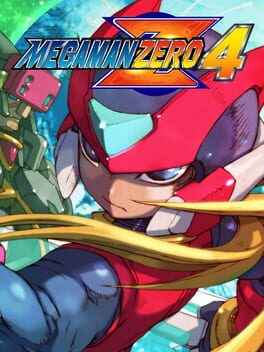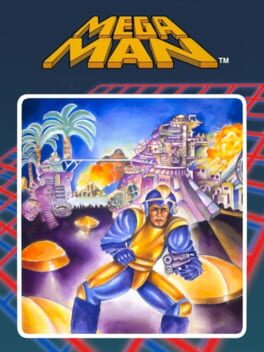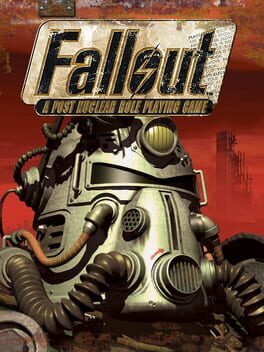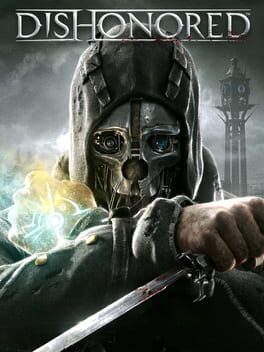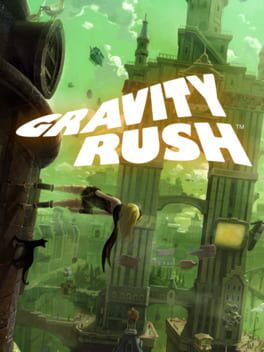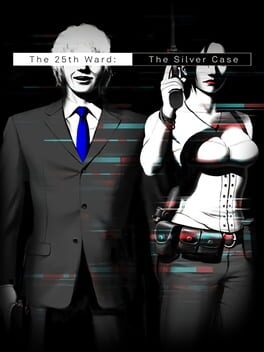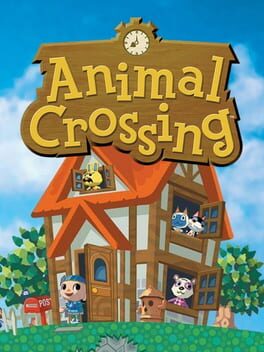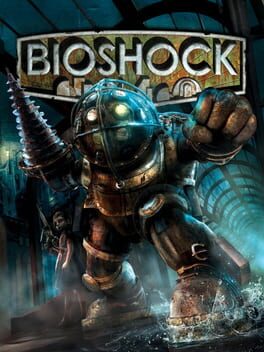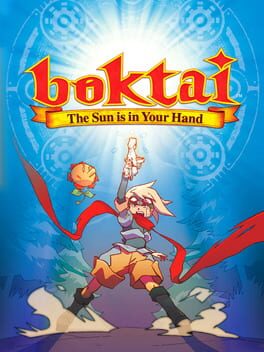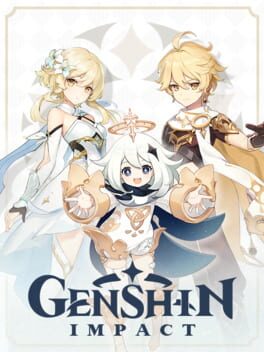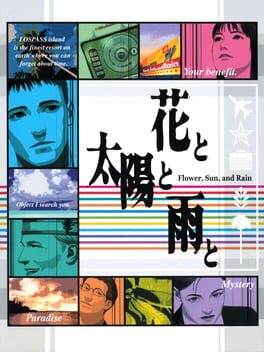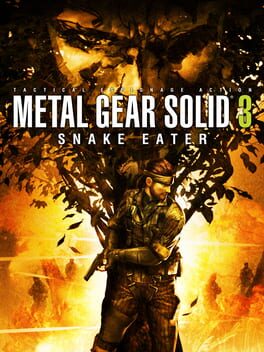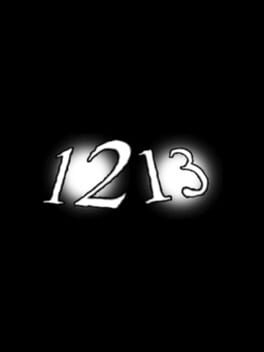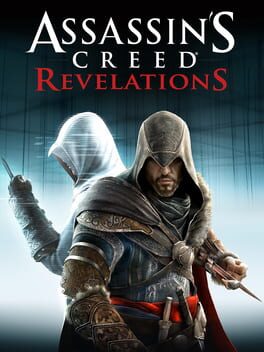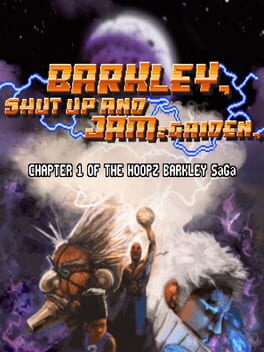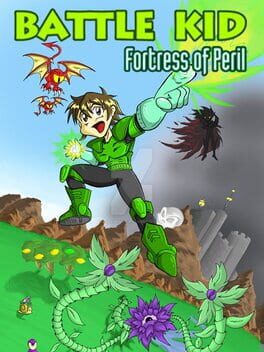Gare
BACKER
180 reviews liked by Gare
Super Mario Sunshine
2002
Super Mario Sunshine is so explicitly Summer themed that even its cover exudes powerful waves of Summah energy. From its very premise - which sees Mario and Peach travel to the perpetually sunny Isle Delfino to enjoy a much-deserved vacation - to its world design and water-based gameplay, it is as blatantly Summah as any game could possibly be. Naturally, ending my 2023 Summah Games Series with Super Mario Sunshine seemed like a no-brainer. Seemed like a real good idea at the time.
The Summah is so cancelled, man.
I haven't touched this game since 2002, and to be perfectly honest, I didn't think very highly of it back then. I was extremely excited for it leading up to release though, as I'm sure plenty of people were considering this was the first big follow up to Super Mario 64. It is somewhat hard to factor out my disappointment when viewing it through the frame of being 64's direct sequel, so I'm going to state up front that I'll be making numerous direct comparisons between both games to elucidate why I think Mario Sunshine just does not work mechanically and feels bad to play.
Episode 1: Blob Mario is On The Loose
Super Mario 64 released in 1996 and was one of the first major 3D platformers - this is an almost unnecessary statement of fact, but I need to establish the premise that Mario 64 plays extremely well both for a product of its era and for its place in the history and development of 3D gaming. A lot of thought went into designing a control scheme that was both intuitive and felt good to engage with, and Nintendo succeeded so well that Mario 64 established a foundation for 3D platformer controls much in the same way the original Super Mario Bros. served as a watershed moment for 2D platformers.
By contrast, Mario feels notably "off" in Super Mario Sunshine. There is no longer any predictability to his movement, he neither feels like an extension of the player nor a character with his own distinct physicality. Mario is a blob. He animates with so much bounce and jiggle that you might think he's composed entirely of some viscous substance, and though charming from an animation standpoint, he controls every bit as goopy as he looks. This results in an awkward delay to his movements, and the bounding nature of his weight results in numerous misfires when jumping. Try to jump onto the top of a nail or any similarly small object and you'll see what I mean. You'll probably overshoot or undershoot several times before finally dialing it in. Worse case, you'll slide off the damn level.
Perhaps they didn't see the need to refine these controls, or otherwise opted not to intentionally in consideration of F.L.U.D.D., Mario's water-firing backpack and the biggest mechanical addition to Sunshine over its predecessor. F.L.U.D.D. can spray water, which is useful for clearing goop, triggering events, and uncovering blue coins (we'll get to those.) He can also turn into a jetpack, which the player will likely rely upon heavily during platforming sequences. It becomes apparent that F.L.U.D.D. serves as a band-aide for Mario's poor physics when you enter the "secret" stages, which remove F.L.U.D.D. from the equation and force you to jump around the old-fashioned way.
If you sink enough time into Mario Sunshine, you might actually pick up on all its idiosyncrasies and gain some dominion over the beast. You might even start to think it's better than Mario 64. I once got locked inside of a Suncast jumbo storage shed with two crates of graham crackers, and I learned to like them so much that I still eat an entire pack for lunch pretty regularly. This is a psychological phenomenon referred to as the "mere-exposure effect," in which we develop a preference for something due to our familiarity with it. You have been conditioned!
Episode 2: Camera Catastrophe
One thing both games have in common, however, is how the camera is treated as a semi-physical object which occupies the same space as Mario. As such, it has a tendency to get caught on geometry. This is a nuisance in both games, but I would argue it's substantially worse in Sunshine due to it the complexity of its stage design and greater abundance of geometry.
Sunshine attempts to correct for this by providing some level of transparency when the camera hangs behind something, but the way this is implemented - by showing Mario's position, dropping out surrounding platforms, and unhelpfully highlighting NPCs, enemies, and objects with vague question marks - is such a half-measure that its inclusion feels utterly worthless. Trying to wrangle the camera using the C-stick even manages to feel worse in practice than using the Nintendo 64's C-buttons, something I wouldn't have thought possible without getting my hands on Sunshine again.
There is an overall lack of consideration in how levels are constructed, and so the camera will often snag right near the start of platforming sequences or when manually aiming the camera to survey the environment. During Episode 1 of Sirena Beach: The Manta Storm, the camera got stuck on a palm tree while Mario was using his jetpack to douse manta rays, which then multiply like Gremlins. As I was trying to get my bearings, Mario fell onto several manta rays, which caused him to leap back into a puddle of goop, which then caused him to bound forward into more manta rays. Mario's screaming was deafening. I still hear it when I fall asleep.
Episode 3: The Blue Coin Economy
In true collect-a-thon fashion, you enter a variety of different stages all connected by a hub world, but unlike Mario 64 where stars can mostly be collected out of order, Sunshine locks you into a more rigid structure. This is because each area tells its own story, like Noki Bay, whose waters have become toxic and require several attempts to purify, gradually changing the level over time. This is a novel concept which consequently boxes the player into completing a set number of episodes in each world. Not only can you not skip Shines which you might simply find unenjoyable to collect, but you must defeat Shadow Mario in each world in order to complete the game. The 50 Shine minimum to see Sunshine's end credits does not translate to "any 50 Shines will do" and instead means "these specific 50 shines, at least. You can get more for like... fun, I guess?"
There is nothing more "fun, I guess?" than the Blue Coins, which seems to be the one universal sore point for Mario Sunshine even among its defenders. There are 30 of these hidden in each level, and every 10 collected earns you another Shine. Functionally, these are meant to encourage the player to more thoroughly explore each level, drawing them to points of interest that each episode's required path might otherwise force them to skip. This is yet another consequence of the more linear nature of Sunshine. You might end up missing whole chunks of levels because you're never asked to go there, so blue coins provide motivation to branch off, beckoning to you and appealing to that dark desire that exists within all of us to do everything, to do it all.
You should not, though. Please exercise some self-restraint. Sometimes I want to drink an entire 8-pack of NOS, but I don't because I know it would be bad for me. Likewise, you should NEVER collect blue coins. All these get you is a post card at the end of the game. You could just look that up on the Internet. Here, I'll even give it to you free of charge.
The problem with blue coins isn't necessarily how many there are, but that they only contribute to 100% completion. There's no reason to interact with them whatsoever because - as we've established - you cannot complete the game by collecting any Shines you please. If you were to cash in half of the total number of blue coins, then the resulting 12 Shines earned mean absolutely nothing despite the effort it took to collect them. This issue could've been entirely side-stepped if blue coins served another purpose, like upgrading F.L.U.D.D. or unlocking some other form of bonus content which progressively opens up the more you cash in. This would not only keep the incentive to collect them but make them even more worthwhile as skipping any would not be so detrimental.
Oh, and you can't check to see what blue coins you've earned in what levels, the game only marks which levels you found every blue coin in and how many you have total. This just makes hunting for them even more of a pain without a guide and a spreadsheet to track them with, so you don't get confused. Some blue coins also appear only in specific episodes, so you need to make repeated trips into levels as well.
While I think the blue coins speak to larger issues with Sunshine's overall design, they are optional, and I am by my own admission hyper-fixating on them. I guess that's what I get for collecting um... 70% of the things.
And not to be entirely negative, I will say that there is some strong level theming in Sunshine. All of it feeds back into that core Summer aesthetic, placing a focus on locations like sun-bleached villages, beaches, a harbor, and a hotel/casino among other places, rather than adhering to tired tropes like desert or ice levels. Although there is one lava level, Corona Mountain, which is pretty much a straight line with really tepid challenges that ends in a flaccid boss fight. Bit anti-climatic.
Episode 4: The Mario Narrative
Some (me) might call Mario Sunshine an embarrassment and a gross misstep in the mainline Mario series. And some (me) might have even hated it so much at the time of its release that they traded it in for pennies on the dollar to a GameStop the second they finished it. Those very people (ME) may have even checked Ebay since then and lamented the fact that they could've swindled some poor fools out of 75 bucks a few years ago before 3D All-Stars brought prices back down to a more "reasonable" 40$.
We all make mistakes. Even Nintendo.
That's something I've chewed on while reflecting on this game. Would I think so harshly of it if it weren't a Mario game? It would still be bad, certainly, but it wouldn't betray a level of trust or an expectation of quality which the larger Mario series had set. Even a game six years its senior and which released on the edge of 3D gaming hitting the mainstream manages to outstrip it in structure, level design, and even controls. Perhaps that just speaks to how impressive Mario 64 is, but it's not unreasonable to think Nintendo could top it given the time and advances in game development. In 2002, Mario Sunshine downright hurt. Even so, I don't think it's appropriate to grade it on the Mario Scale.
Even if you chalk some it up to a difference in vision - due either to Miyamoto desiring something unique or Koizumi's directorial style - simple things like the way Mario plays should feel far more refined. Instead, Sunshine is sloppy game, one that uses Mario 64's bones and constructs them into something familiar but all too crude.
BUT IS IT A SUMMAH GAME?
man i don't give a shit
The Summah is so cancelled, man.
I haven't touched this game since 2002, and to be perfectly honest, I didn't think very highly of it back then. I was extremely excited for it leading up to release though, as I'm sure plenty of people were considering this was the first big follow up to Super Mario 64. It is somewhat hard to factor out my disappointment when viewing it through the frame of being 64's direct sequel, so I'm going to state up front that I'll be making numerous direct comparisons between both games to elucidate why I think Mario Sunshine just does not work mechanically and feels bad to play.
Episode 1: Blob Mario is On The Loose
Super Mario 64 released in 1996 and was one of the first major 3D platformers - this is an almost unnecessary statement of fact, but I need to establish the premise that Mario 64 plays extremely well both for a product of its era and for its place in the history and development of 3D gaming. A lot of thought went into designing a control scheme that was both intuitive and felt good to engage with, and Nintendo succeeded so well that Mario 64 established a foundation for 3D platformer controls much in the same way the original Super Mario Bros. served as a watershed moment for 2D platformers.
By contrast, Mario feels notably "off" in Super Mario Sunshine. There is no longer any predictability to his movement, he neither feels like an extension of the player nor a character with his own distinct physicality. Mario is a blob. He animates with so much bounce and jiggle that you might think he's composed entirely of some viscous substance, and though charming from an animation standpoint, he controls every bit as goopy as he looks. This results in an awkward delay to his movements, and the bounding nature of his weight results in numerous misfires when jumping. Try to jump onto the top of a nail or any similarly small object and you'll see what I mean. You'll probably overshoot or undershoot several times before finally dialing it in. Worse case, you'll slide off the damn level.
Perhaps they didn't see the need to refine these controls, or otherwise opted not to intentionally in consideration of F.L.U.D.D., Mario's water-firing backpack and the biggest mechanical addition to Sunshine over its predecessor. F.L.U.D.D. can spray water, which is useful for clearing goop, triggering events, and uncovering blue coins (we'll get to those.) He can also turn into a jetpack, which the player will likely rely upon heavily during platforming sequences. It becomes apparent that F.L.U.D.D. serves as a band-aide for Mario's poor physics when you enter the "secret" stages, which remove F.L.U.D.D. from the equation and force you to jump around the old-fashioned way.
If you sink enough time into Mario Sunshine, you might actually pick up on all its idiosyncrasies and gain some dominion over the beast. You might even start to think it's better than Mario 64. I once got locked inside of a Suncast jumbo storage shed with two crates of graham crackers, and I learned to like them so much that I still eat an entire pack for lunch pretty regularly. This is a psychological phenomenon referred to as the "mere-exposure effect," in which we develop a preference for something due to our familiarity with it. You have been conditioned!
Episode 2: Camera Catastrophe
One thing both games have in common, however, is how the camera is treated as a semi-physical object which occupies the same space as Mario. As such, it has a tendency to get caught on geometry. This is a nuisance in both games, but I would argue it's substantially worse in Sunshine due to it the complexity of its stage design and greater abundance of geometry.
Sunshine attempts to correct for this by providing some level of transparency when the camera hangs behind something, but the way this is implemented - by showing Mario's position, dropping out surrounding platforms, and unhelpfully highlighting NPCs, enemies, and objects with vague question marks - is such a half-measure that its inclusion feels utterly worthless. Trying to wrangle the camera using the C-stick even manages to feel worse in practice than using the Nintendo 64's C-buttons, something I wouldn't have thought possible without getting my hands on Sunshine again.
There is an overall lack of consideration in how levels are constructed, and so the camera will often snag right near the start of platforming sequences or when manually aiming the camera to survey the environment. During Episode 1 of Sirena Beach: The Manta Storm, the camera got stuck on a palm tree while Mario was using his jetpack to douse manta rays, which then multiply like Gremlins. As I was trying to get my bearings, Mario fell onto several manta rays, which caused him to leap back into a puddle of goop, which then caused him to bound forward into more manta rays. Mario's screaming was deafening. I still hear it when I fall asleep.
Episode 3: The Blue Coin Economy
In true collect-a-thon fashion, you enter a variety of different stages all connected by a hub world, but unlike Mario 64 where stars can mostly be collected out of order, Sunshine locks you into a more rigid structure. This is because each area tells its own story, like Noki Bay, whose waters have become toxic and require several attempts to purify, gradually changing the level over time. This is a novel concept which consequently boxes the player into completing a set number of episodes in each world. Not only can you not skip Shines which you might simply find unenjoyable to collect, but you must defeat Shadow Mario in each world in order to complete the game. The 50 Shine minimum to see Sunshine's end credits does not translate to "any 50 Shines will do" and instead means "these specific 50 shines, at least. You can get more for like... fun, I guess?"
There is nothing more "fun, I guess?" than the Blue Coins, which seems to be the one universal sore point for Mario Sunshine even among its defenders. There are 30 of these hidden in each level, and every 10 collected earns you another Shine. Functionally, these are meant to encourage the player to more thoroughly explore each level, drawing them to points of interest that each episode's required path might otherwise force them to skip. This is yet another consequence of the more linear nature of Sunshine. You might end up missing whole chunks of levels because you're never asked to go there, so blue coins provide motivation to branch off, beckoning to you and appealing to that dark desire that exists within all of us to do everything, to do it all.
You should not, though. Please exercise some self-restraint. Sometimes I want to drink an entire 8-pack of NOS, but I don't because I know it would be bad for me. Likewise, you should NEVER collect blue coins. All these get you is a post card at the end of the game. You could just look that up on the Internet. Here, I'll even give it to you free of charge.
The problem with blue coins isn't necessarily how many there are, but that they only contribute to 100% completion. There's no reason to interact with them whatsoever because - as we've established - you cannot complete the game by collecting any Shines you please. If you were to cash in half of the total number of blue coins, then the resulting 12 Shines earned mean absolutely nothing despite the effort it took to collect them. This issue could've been entirely side-stepped if blue coins served another purpose, like upgrading F.L.U.D.D. or unlocking some other form of bonus content which progressively opens up the more you cash in. This would not only keep the incentive to collect them but make them even more worthwhile as skipping any would not be so detrimental.
Oh, and you can't check to see what blue coins you've earned in what levels, the game only marks which levels you found every blue coin in and how many you have total. This just makes hunting for them even more of a pain without a guide and a spreadsheet to track them with, so you don't get confused. Some blue coins also appear only in specific episodes, so you need to make repeated trips into levels as well.
While I think the blue coins speak to larger issues with Sunshine's overall design, they are optional, and I am by my own admission hyper-fixating on them. I guess that's what I get for collecting um... 70% of the things.
And not to be entirely negative, I will say that there is some strong level theming in Sunshine. All of it feeds back into that core Summer aesthetic, placing a focus on locations like sun-bleached villages, beaches, a harbor, and a hotel/casino among other places, rather than adhering to tired tropes like desert or ice levels. Although there is one lava level, Corona Mountain, which is pretty much a straight line with really tepid challenges that ends in a flaccid boss fight. Bit anti-climatic.
Episode 4: The Mario Narrative
Some (me) might call Mario Sunshine an embarrassment and a gross misstep in the mainline Mario series. And some (me) might have even hated it so much at the time of its release that they traded it in for pennies on the dollar to a GameStop the second they finished it. Those very people (ME) may have even checked Ebay since then and lamented the fact that they could've swindled some poor fools out of 75 bucks a few years ago before 3D All-Stars brought prices back down to a more "reasonable" 40$.
We all make mistakes. Even Nintendo.
That's something I've chewed on while reflecting on this game. Would I think so harshly of it if it weren't a Mario game? It would still be bad, certainly, but it wouldn't betray a level of trust or an expectation of quality which the larger Mario series had set. Even a game six years its senior and which released on the edge of 3D gaming hitting the mainstream manages to outstrip it in structure, level design, and even controls. Perhaps that just speaks to how impressive Mario 64 is, but it's not unreasonable to think Nintendo could top it given the time and advances in game development. In 2002, Mario Sunshine downright hurt. Even so, I don't think it's appropriate to grade it on the Mario Scale.
Even if you chalk some it up to a difference in vision - due either to Miyamoto desiring something unique or Koizumi's directorial style - simple things like the way Mario plays should feel far more refined. Instead, Sunshine is sloppy game, one that uses Mario 64's bones and constructs them into something familiar but all too crude.
BUT IS IT A SUMMAH GAME?
man i don't give a shit
Hylics
2015
The cutscene that plays when using the dynamite on a battle is the single best thing ever implemented in any videogame in all of human history and I’m only mildly exaggerating.
A macabre festival where the dance never ends, a fever dream made out of bones and clay; Hylics manages to perfectly capture the feeling of a nightmare that seems to be completely absurd, yet it manages to craft meaning within the spiral of chaos. Places with random names located in islands that make no sense; mazes and entire worlds inside machines down ladders that somehow connect, and half of the odd weirdos you come across seem to speak in riddles and the other half take the insanity of this realm as another Tuesday, but all share the incredibly exaggerated animations, that range from the smoothest hand and clay movement you could think of in battles to just three frames for each walk cycle, and I wouldn’t have it any other way.
If Hylics delivers something in spades, it’s definitively a sense of style, of harsh clay figurines and contrasting colors, of poems and jokes, with mountaintops populated by cone-shaped cultists and an afterlife full of fishes and a couch. I could list every single area and enemy in this game and say, ‘’WoAH! That was pretty weird and cool!’’, but I think the fact the game is just that, an avalanche of nonsense and weird shapes—and somehow finds a way to make an actually pretty simple tale and a world that has some sort of meaning and makes sense—is far more impressive than the weird moments themselves.
The harsh and quiet melodies, the special moves you get by watching the TVs, the pals you meet along the way; it’s really hard to talk about individual aspects of Hylics because everything seems intrinsically connected with each other and totally unique at the same time, which ironically makes it so some of the moments that stand out like a sore thumb are those in which it feels like the game doesn’t go nuts enough with its ideas.
The combat system, as crazy as some of the attacks get, is still pretty light; there are some cool things about it, like how it connects to the afterlife, some item interactions, and how the game’s own openness makes meeting allies and gaining abilities completely up to you. But I think that’s where the interest peaks, in how the combat is pretty determined by what you do outside of it, and when it comes to battles themselves, while there are some interesting bosses, it soon became pretty clear others are just damage sponges and that you can become pretty powerful very easily, and that plus how the areas are designed often makes combat seem more like a chore you sometimes do to get past a certain point or gain meat and money, and that otherwise evading conflict is often the faster, less annoying option.
And again, it’s in these battles where some of the more abstract and impressive animations can be found, and if anything, the final area and boss fight will ask of you to have gotten many special secret moves and quite the amount of bucks, so it isn’t completely valueless to engage in combat, but in a game with such a crazy atmosphere and universe, I was hoping for something far more engaging.
I was hoping to see more of the party members, who seem to lose their mouths the moment they join you. I was hoping for some of the puzzles to be more out there. I was hoping for more of its insane style to slip into other areas, like the menus or the secrets… Hylics presents an impossibly creative world, and even if it doesn’t last longer than it needs to and it's full of amazing stuff, it feels as if its full potential has yet to be achieved.
But what was accomplished is unforgettable; despite wishing I got to see more of their personalities, the yellow devil and his three friends singing and playing in a bar in the middle of nowhere and plowing through the forces of the moon before facing the final fiend are some amazing moments that made me laugh despite no words being said. Wade is a menace, but not one that has to be locked up; in fact, it should be let out even more wild. Godspeed, you crazy bastard…
Also, big fan of Somsnosa, it’s always nice to see another hat with horns appreciator…
A macabre festival where the dance never ends, a fever dream made out of bones and clay; Hylics manages to perfectly capture the feeling of a nightmare that seems to be completely absurd, yet it manages to craft meaning within the spiral of chaos. Places with random names located in islands that make no sense; mazes and entire worlds inside machines down ladders that somehow connect, and half of the odd weirdos you come across seem to speak in riddles and the other half take the insanity of this realm as another Tuesday, but all share the incredibly exaggerated animations, that range from the smoothest hand and clay movement you could think of in battles to just three frames for each walk cycle, and I wouldn’t have it any other way.
If Hylics delivers something in spades, it’s definitively a sense of style, of harsh clay figurines and contrasting colors, of poems and jokes, with mountaintops populated by cone-shaped cultists and an afterlife full of fishes and a couch. I could list every single area and enemy in this game and say, ‘’WoAH! That was pretty weird and cool!’’, but I think the fact the game is just that, an avalanche of nonsense and weird shapes—and somehow finds a way to make an actually pretty simple tale and a world that has some sort of meaning and makes sense—is far more impressive than the weird moments themselves.
The harsh and quiet melodies, the special moves you get by watching the TVs, the pals you meet along the way; it’s really hard to talk about individual aspects of Hylics because everything seems intrinsically connected with each other and totally unique at the same time, which ironically makes it so some of the moments that stand out like a sore thumb are those in which it feels like the game doesn’t go nuts enough with its ideas.
The combat system, as crazy as some of the attacks get, is still pretty light; there are some cool things about it, like how it connects to the afterlife, some item interactions, and how the game’s own openness makes meeting allies and gaining abilities completely up to you. But I think that’s where the interest peaks, in how the combat is pretty determined by what you do outside of it, and when it comes to battles themselves, while there are some interesting bosses, it soon became pretty clear others are just damage sponges and that you can become pretty powerful very easily, and that plus how the areas are designed often makes combat seem more like a chore you sometimes do to get past a certain point or gain meat and money, and that otherwise evading conflict is often the faster, less annoying option.
And again, it’s in these battles where some of the more abstract and impressive animations can be found, and if anything, the final area and boss fight will ask of you to have gotten many special secret moves and quite the amount of bucks, so it isn’t completely valueless to engage in combat, but in a game with such a crazy atmosphere and universe, I was hoping for something far more engaging.
I was hoping to see more of the party members, who seem to lose their mouths the moment they join you. I was hoping for some of the puzzles to be more out there. I was hoping for more of its insane style to slip into other areas, like the menus or the secrets… Hylics presents an impossibly creative world, and even if it doesn’t last longer than it needs to and it's full of amazing stuff, it feels as if its full potential has yet to be achieved.
But what was accomplished is unforgettable; despite wishing I got to see more of their personalities, the yellow devil and his three friends singing and playing in a bar in the middle of nowhere and plowing through the forces of the moon before facing the final fiend are some amazing moments that made me laugh despite no words being said. Wade is a menace, but not one that has to be locked up; in fact, it should be let out even more wild. Godspeed, you crazy bastard…
Also, big fan of Somsnosa, it’s always nice to see another hat with horns appreciator…
Final Fantasy IV
1991
PaRappa the Rapper
1996
Hollow Knight
2017
"Because it's there." - British climber George Mallory, when asked why he wanted to climb Everest (also me, when my wife asks me why I want to finish the burger and all the fries when I'm no longer hungry)
It's no Everest, but the world of Hallownest is huge, intimidating, and wondrous; in a game where the 'plot breadcrumbs' style of storytelling means a general lack of narrative thrust, the mere existence of Hallownest is reason enough to want to explore it. Hollow Knight is sensationally good at worldbuilding through level design, and even through the so-called "slow start" I found myself wanting to get down and dirty exploring every nook of the game world; it helps that a huge portion of the world is almost immediately accessible without extra movement abilities, meaning that my journey of discovering Hallownest for the first time felt unique by virtue of how Hollow Knight seems more open-ended than other Metroidvanias.
Better writers than me have discussed the mechanics in much depth, but I do have to mention them anyway. Combat and movement is tight, consistent, and refined - this is evident in the sheer depth that your relatively small moveset brings to the boss fights, but also in how each new movement option adds more fluency and expressivity in how you traverse each area, bringing a joy to exploration that even the game's slight over-reliance on 'gotcha' hits cannot extinguish.
The 3.5 score at the top of this entry is probably a spoiler that there is a pretty big caveat to my praise above, and that comes in the form of something seemingly inconsequential to anyone who hasn't played the game: the benches (reload points) are on many occasions placed so far from bosses that it feels borderline spiteful. My issue here isn't that the game is hard; I think the difficulty level of the bosses is perfect and it really makes you earn your victories! But punishing failure with 5 minutes of backtracking so you can try again, only to get your ass kicked in 30 seconds, only to repeat the process ad nauseam, is a really frustrating way to git gud. It doesn't help that a fair few of the pre-boss 'gauntlets' are rather unengaging (the tunnel mazes before facing Nosk, or waiting for the series of elevators leading up to the Soul Warrior + Follies).
And much like the affliction that has spread to even the furthest reaches of Hallownest, this 'little' issue of bench placement has infected many other aspects of the game. The bosses are one of the big highlights of Hollow Knight but the bench placement makes the process of learning how to beat them more frustrating than it needs to be. And even the exploration is not spared - backtracking from bench to boss reduces the wonder of charting a living breathing world to a perfunctory and linear commute through a series of rooms I've seen dozens of times before, its effect on my play experience not unlike a long unskippable cutscene in the way it kills my momentum.
It would be easy for me to sum up my experience as thus: Hollow Knight is an otherwise-nearly-perfect game which was tarnished by one small flaw. And yet it's not that simple either! After completing the game and watching the end credits, I found myself experiencing not relief (as I usually do on finishing long games I'm ambivalent on) but profound melancholy. I watched excerpts of speedruns. I watched some videos on the the lore. I reloaded my save and tried some of the challenges that I previously decided were not worth my time cough White Palace cough. Tried and failed, but still. It's hard for me to leave it behind and move onto the next game - there's something alluring about the ruined world of Hallownest and I feel it will occupy my mind for some time.
Because it's there.
(101% completion, standard ending)
It's no Everest, but the world of Hallownest is huge, intimidating, and wondrous; in a game where the 'plot breadcrumbs' style of storytelling means a general lack of narrative thrust, the mere existence of Hallownest is reason enough to want to explore it. Hollow Knight is sensationally good at worldbuilding through level design, and even through the so-called "slow start" I found myself wanting to get down and dirty exploring every nook of the game world; it helps that a huge portion of the world is almost immediately accessible without extra movement abilities, meaning that my journey of discovering Hallownest for the first time felt unique by virtue of how Hollow Knight seems more open-ended than other Metroidvanias.
Better writers than me have discussed the mechanics in much depth, but I do have to mention them anyway. Combat and movement is tight, consistent, and refined - this is evident in the sheer depth that your relatively small moveset brings to the boss fights, but also in how each new movement option adds more fluency and expressivity in how you traverse each area, bringing a joy to exploration that even the game's slight over-reliance on 'gotcha' hits cannot extinguish.
The 3.5 score at the top of this entry is probably a spoiler that there is a pretty big caveat to my praise above, and that comes in the form of something seemingly inconsequential to anyone who hasn't played the game: the benches (reload points) are on many occasions placed so far from bosses that it feels borderline spiteful. My issue here isn't that the game is hard; I think the difficulty level of the bosses is perfect and it really makes you earn your victories! But punishing failure with 5 minutes of backtracking so you can try again, only to get your ass kicked in 30 seconds, only to repeat the process ad nauseam, is a really frustrating way to git gud. It doesn't help that a fair few of the pre-boss 'gauntlets' are rather unengaging (the tunnel mazes before facing Nosk, or waiting for the series of elevators leading up to the Soul Warrior + Follies).
And much like the affliction that has spread to even the furthest reaches of Hallownest, this 'little' issue of bench placement has infected many other aspects of the game. The bosses are one of the big highlights of Hollow Knight but the bench placement makes the process of learning how to beat them more frustrating than it needs to be. And even the exploration is not spared - backtracking from bench to boss reduces the wonder of charting a living breathing world to a perfunctory and linear commute through a series of rooms I've seen dozens of times before, its effect on my play experience not unlike a long unskippable cutscene in the way it kills my momentum.
It would be easy for me to sum up my experience as thus: Hollow Knight is an otherwise-nearly-perfect game which was tarnished by one small flaw. And yet it's not that simple either! After completing the game and watching the end credits, I found myself experiencing not relief (as I usually do on finishing long games I'm ambivalent on) but profound melancholy. I watched excerpts of speedruns. I watched some videos on the the lore. I reloaded my save and tried some of the challenges that I previously decided were not worth my time cough White Palace cough. Tried and failed, but still. It's hard for me to leave it behind and move onto the next game - there's something alluring about the ruined world of Hallownest and I feel it will occupy my mind for some time.
Because it's there.
(101% completion, standard ending)
ActRaiser
1990
I'm a big fan of genre mashups. For a while now, the best way to get my attention and stand out from within the neverending tide of new releases is to do "genre 1 + genre 2" to make combinations I haven't seen before. Sometimes these result in great new games that do something innovative, and sometimes they produce an incoherent mess, or just an underwhelming experience. And whilst I associate most of this school of design with modern indie games, I knew that they certainly weren't the inventors of this approach; and I thought I had to pay my respects to the OG weird genre mashup : Actraiser (and yeah I know there were weird genre mixes even further back depending on what you count but remember that video game genres are bullshit anyways so its fine)
The strength of a hybrid gameplay model is 2 fold. One is that its an in-built tool for pacing wherein one mode is a nice change of pace/a break from the other. Though more conventional, games like Persona (3 onwards), XCOM, Recettear etc keep the line going up and down with their respective gameplay models. When I'm tired of hanging out in P5 I can do a dungeon and when Im tired of that I can go back and eat a giant burger in Shibuya. The other is that the gameplay modes can feed into each other and make what might be two vastly different mechanical exercises integrate more closely through these connections like getting weapon fragments from killed aliens in missions in XCOM to build laser rifles back in the base to kill aliens more efficiently to get more fragments etc.
That last part is usually the make or break for the genre hybrid in my experience. At best, the two tie seamlessly together in a way that it makes you wonder how no one thought about this before, at worst both become a slog or one feels bolted to the other unnaturally, you resent one mode from keeping you away from the other. There is also a third approach, where you simply don't try all that hard to integrate the two modes or even at all, which can also work.
Actraiser kinda tries to integrate its city building with its castlevania-esque action platforming, but not super hard. And I think it works in that respect. You play as an avatar of "the NOT Christian God" helping various settlements to grow in population by directing them to build towards available land, clearing swamps and foliage, killing demons who respawn until the towns grow close enough to their lairs to close them etc. You do this so more people can worship you, which makes you more powerful and therefore more able to foil the plans of "NOT Satan". Its a cool (and you'll forgive me for using this word) ludonarrative, wherein a symbiotic relationship exists between god and those who worship him, God protects his flock from evil who in turn make him stronger. It also pre empts the usual narrative question of "how can there be an antagonist to an omnipotent being?" by making the battle between good and evil also a battle for the hearts and minds of people, the will of the creator being realized through their work.
This is brought up more explicitly during the Maranha Arc, an island with a pretty substantial presence of monsters, leaving you to constantly kill the demons in the overworld lest they get 5 seconds to burn the peoples' crops. The narrative of that particular episode involves the people being seduced by the dark forces and eventually even the temple priests who communicate with you go over to the demons' side. After you defeat the evil demons they explain that they were deceived by the demons due to the hardship they suffered, their faith wavering when faced with hunger and violence. This reminds a bit of the story of Job from the bible, who was tested at the behest of "the adversary" to prove to God that his faith was only due to his blessed circumstances. Ultimately Job endures great suffering without turning his back on God which leads him to be greatly rewarded.
There is also the matter of the "demons" being based on figures from other religions like the minotaur, pharaohs (who were the gods' representatives on earth in egyptian mythology) , various others from nordic and hindu mythology etc. The master is a jealous god, angered by these "false idols", its no surprise the game was subject to censorship when being localised in the west to avoid the more overt references to christianity and religion in general. As much as the game is a metaphor for monotheism I think there's also a hint of Buddhism, possibly due to Quintet(the studio which made Actraiser) being a japanese studio. There is mention in the epilogue of reincarnation and whilst in keeping with Christian lore, the idea of humans being straying from righteousness by the allure of demons who keep them in suffering on this earthly realm through violence smacks a bit of Mara, the demonic representative of death, rebirth and pleasure, who tried to stop Siddharta Gautama from achieving enlightenment.
Actraiser does a lot with very little, in this respect, and I kind of wish there was more to this, the game is rather brief and most of the "point" is relayed right at the end after the final boss rush, at which time I'm a bit too high off of the victory to meditate on human's tendencies to abandon religion when their living standards rise. Actraiser is definitely greater than the sum of its parts. The menuing and UX of the city building is a bit clunky, not being able to do anything whilst a town is being constructed is ok, but can you just let me use my powers without having to show me the slow text box explaining its use every single time I use them? The platforming is good, has that weighty movement reminiscent of a Castlevania 1 but the hitboxes can be a bit dodgy, sometimes in the enemy's favour, sometimes in the player's. Hitting enemies at floor height remains kind of a crap shoot all the way to the final boss. I am pretty shit at the game but thankfully Actraiser is a lot more generous with the wall chicken than CV1 is. And hell, worst case scenario you can go back and increase the population to upgrade your max health. Not a big fan of the final boss gauntlet, its always a gut punch reading a guide for a game who says "yeah this boss is bullshit, just use your fuck you spell to kill him quickly, the other bosses can be fought normally".
In the end though, I enjoyed Actraiser, I think its rightfully seen as a classic and will rank highly if I ever make a list of my favourite genre hybrid games. I have heard that the sequel abandons the god game aspect entirely, and that sounds like kind of a waste... I'll play it eventually but not anytime soon.
The strength of a hybrid gameplay model is 2 fold. One is that its an in-built tool for pacing wherein one mode is a nice change of pace/a break from the other. Though more conventional, games like Persona (3 onwards), XCOM, Recettear etc keep the line going up and down with their respective gameplay models. When I'm tired of hanging out in P5 I can do a dungeon and when Im tired of that I can go back and eat a giant burger in Shibuya. The other is that the gameplay modes can feed into each other and make what might be two vastly different mechanical exercises integrate more closely through these connections like getting weapon fragments from killed aliens in missions in XCOM to build laser rifles back in the base to kill aliens more efficiently to get more fragments etc.
That last part is usually the make or break for the genre hybrid in my experience. At best, the two tie seamlessly together in a way that it makes you wonder how no one thought about this before, at worst both become a slog or one feels bolted to the other unnaturally, you resent one mode from keeping you away from the other. There is also a third approach, where you simply don't try all that hard to integrate the two modes or even at all, which can also work.
Actraiser kinda tries to integrate its city building with its castlevania-esque action platforming, but not super hard. And I think it works in that respect. You play as an avatar of "the NOT Christian God" helping various settlements to grow in population by directing them to build towards available land, clearing swamps and foliage, killing demons who respawn until the towns grow close enough to their lairs to close them etc. You do this so more people can worship you, which makes you more powerful and therefore more able to foil the plans of "NOT Satan". Its a cool (and you'll forgive me for using this word) ludonarrative, wherein a symbiotic relationship exists between god and those who worship him, God protects his flock from evil who in turn make him stronger. It also pre empts the usual narrative question of "how can there be an antagonist to an omnipotent being?" by making the battle between good and evil also a battle for the hearts and minds of people, the will of the creator being realized through their work.
This is brought up more explicitly during the Maranha Arc, an island with a pretty substantial presence of monsters, leaving you to constantly kill the demons in the overworld lest they get 5 seconds to burn the peoples' crops. The narrative of that particular episode involves the people being seduced by the dark forces and eventually even the temple priests who communicate with you go over to the demons' side. After you defeat the evil demons they explain that they were deceived by the demons due to the hardship they suffered, their faith wavering when faced with hunger and violence. This reminds a bit of the story of Job from the bible, who was tested at the behest of "the adversary" to prove to God that his faith was only due to his blessed circumstances. Ultimately Job endures great suffering without turning his back on God which leads him to be greatly rewarded.
There is also the matter of the "demons" being based on figures from other religions like the minotaur, pharaohs (who were the gods' representatives on earth in egyptian mythology) , various others from nordic and hindu mythology etc. The master is a jealous god, angered by these "false idols", its no surprise the game was subject to censorship when being localised in the west to avoid the more overt references to christianity and religion in general. As much as the game is a metaphor for monotheism I think there's also a hint of Buddhism, possibly due to Quintet(the studio which made Actraiser) being a japanese studio. There is mention in the epilogue of reincarnation and whilst in keeping with Christian lore, the idea of humans being straying from righteousness by the allure of demons who keep them in suffering on this earthly realm through violence smacks a bit of Mara, the demonic representative of death, rebirth and pleasure, who tried to stop Siddharta Gautama from achieving enlightenment.
Actraiser does a lot with very little, in this respect, and I kind of wish there was more to this, the game is rather brief and most of the "point" is relayed right at the end after the final boss rush, at which time I'm a bit too high off of the victory to meditate on human's tendencies to abandon religion when their living standards rise. Actraiser is definitely greater than the sum of its parts. The menuing and UX of the city building is a bit clunky, not being able to do anything whilst a town is being constructed is ok, but can you just let me use my powers without having to show me the slow text box explaining its use every single time I use them? The platforming is good, has that weighty movement reminiscent of a Castlevania 1 but the hitboxes can be a bit dodgy, sometimes in the enemy's favour, sometimes in the player's. Hitting enemies at floor height remains kind of a crap shoot all the way to the final boss. I am pretty shit at the game but thankfully Actraiser is a lot more generous with the wall chicken than CV1 is. And hell, worst case scenario you can go back and increase the population to upgrade your max health. Not a big fan of the final boss gauntlet, its always a gut punch reading a guide for a game who says "yeah this boss is bullshit, just use your fuck you spell to kill him quickly, the other bosses can be fought normally".
In the end though, I enjoyed Actraiser, I think its rightfully seen as a classic and will rank highly if I ever make a list of my favourite genre hybrid games. I have heard that the sequel abandons the god game aspect entirely, and that sounds like kind of a waste... I'll play it eventually but not anytime soon.
Somber platforming and an eclectic soundtrack full of waltz compositions and an oddly pervasive use of lo-fi samples and drum beats, very unique. But levels get pretty repetitive pretty quick, and bosses are generally bad.
The ending to this game is so fucked up, the original cuts to credits right after the final boss. The fan translation adds a
custom ending, but it looks total dogshit cause they just re-use sprites from the other parts of the game with no regard for proportions. It needs to be seen to be believed, it's like a dogshit newgrounds animation.
The ending to this game is so fucked up, the original cuts to credits right after the final boss. The fan translation adds a
custom ending, but it looks total dogshit cause they just re-use sprites from the other parts of the game with no regard for proportions. It needs to be seen to be believed, it's like a dogshit newgrounds animation.
Back when the Wii U launched there was one game I was looking forward to and curious as to what Nintendo would do with said game, that being whatever 3d Mario game Nintendo was cooking. 3d platformers have always been one of my favorite game genres and with Nintendo's last console 3d Mario game being Super Mario Galaxy 2, I had very high expectations with what they could make with the new hardware. Then E3 13 came around, and I woke up to the news of whatever 3d Mario game being a Mario 3d Land sequel. Needless to say, I was pretty disappointed at the time. Even with said disappointment in mind, I still thought it looked intriguing enough to get when I had my Wii U. Much like everything else that wasn't Smash, I didn't get far in the game and would eventually abandon my playthrough.
In 2020, Nintendo would go on to announce this version of the game that came with a bonus game, Bowser's Fury. Having not finished 3d Land and with the extra game added, I thought purchasing a Switch copy was well worth the money. I completed Super Mario 3d World last year and a few weeks ago I finally got around to finishing Bowser's Fury. Since I have completed both games, I've decided to write this review.
Super Mario 3d World: Aside from Super Mario 64, Super Mario 3d Land was definitely my least favorite 3d Mario game. I still liked it, but in comparison to the other 3d Mario games and other platformers like the Banjo games, it never scratched that itch for me. Super Mario 3d World is a big improvement over its 3DS predecessor and it did not disappoint.
The levels have more variety and are more refined, there are bosses in this game that aren't just Boom-Boom or 11 different variations of Bowser, the double cherries that allow you to clone yourself, and there is the catsuit. For as stupid as Cat Mario sounds and looks, it is easily one of the most fun power-ups in the series. The catsuit allows you to dive into enemies and climb onto walls. The wall climbing alone makes it one of the most useful and fun power-ups as it can save you from a ton of deaths or help you get collectibles easier. The last notable inclusion is co-op. This is also a big deal because it is the only full-fledged 3d Mario to have co-op that isn't just doing tasks for player one. That alone makes this game worth playing if you have friends around.
It may not have been the Super Mario Galaxy 3 I was hoping for, but it is still a fantastic 3d Mario that lives up to the quality of the games that came before it.
Bowser's Fury: This was an interesting one to play through. It reminds me a lot of Mario Odyssey and with how collecting the moons in that game worked, but it also felt fresh. The impression I got from playing this is that they want to make the next 3d Mario open-world with this game as sort of a test for what is to come. In that case, I really enjoyed the freedom that Bowser's Fury gives you in exploring the world and choosing which bells you'll get as opposed to the more linear approach some of the other 3d Mario games have taken.
My only real flaw with Bowser's Fury is that it is rather short and it can easily be completed within a few hours.
If you previously owned Super Mario 3d World then I wouldn't say Bowser's Fury alone is worth dropping $60 for, but if you're one of those who missed it on Wii U then it is a must-have for the Nintendo Switch.
In 2020, Nintendo would go on to announce this version of the game that came with a bonus game, Bowser's Fury. Having not finished 3d Land and with the extra game added, I thought purchasing a Switch copy was well worth the money. I completed Super Mario 3d World last year and a few weeks ago I finally got around to finishing Bowser's Fury. Since I have completed both games, I've decided to write this review.
Super Mario 3d World: Aside from Super Mario 64, Super Mario 3d Land was definitely my least favorite 3d Mario game. I still liked it, but in comparison to the other 3d Mario games and other platformers like the Banjo games, it never scratched that itch for me. Super Mario 3d World is a big improvement over its 3DS predecessor and it did not disappoint.
The levels have more variety and are more refined, there are bosses in this game that aren't just Boom-Boom or 11 different variations of Bowser, the double cherries that allow you to clone yourself, and there is the catsuit. For as stupid as Cat Mario sounds and looks, it is easily one of the most fun power-ups in the series. The catsuit allows you to dive into enemies and climb onto walls. The wall climbing alone makes it one of the most useful and fun power-ups as it can save you from a ton of deaths or help you get collectibles easier. The last notable inclusion is co-op. This is also a big deal because it is the only full-fledged 3d Mario to have co-op that isn't just doing tasks for player one. That alone makes this game worth playing if you have friends around.
It may not have been the Super Mario Galaxy 3 I was hoping for, but it is still a fantastic 3d Mario that lives up to the quality of the games that came before it.
Bowser's Fury: This was an interesting one to play through. It reminds me a lot of Mario Odyssey and with how collecting the moons in that game worked, but it also felt fresh. The impression I got from playing this is that they want to make the next 3d Mario open-world with this game as sort of a test for what is to come. In that case, I really enjoyed the freedom that Bowser's Fury gives you in exploring the world and choosing which bells you'll get as opposed to the more linear approach some of the other 3d Mario games have taken.
My only real flaw with Bowser's Fury is that it is rather short and it can easily be completed within a few hours.
If you previously owned Super Mario 3d World then I wouldn't say Bowser's Fury alone is worth dropping $60 for, but if you're one of those who missed it on Wii U then it is a must-have for the Nintendo Switch.
Parodius
1992
At what point do you think a game becomes "too grindy"? It's hard to really say, of course. There's no clear threshold set in stone, and it also seems to depend somewhat on the genre you're dealing with.
Not only that, but the pure subjectivity of it all. I had a friend some years ago who was like really into shit like NES Ghosts 'n Goblins and Battletoads, and he seemed to thoroughly hate it when I complained about "clunkiness" or "grinding" or any similar form of bullshit in any capacity. I silently ditched him over time because he was also a total loser contrarian about everything you could possibly think of, but I'd bet if I talked to him now he probably wouldn't have any issues with this game's grinding.
As for everyone else, I've hypothesized that a decent enough catch-all threshold for Too Much Grinding is when it doubles the entire game's runtime, such as with Phantasy Star II or Spike McFang, today's central focus. I want to like Spike McFang more. It's a very cute action RPG in the style of Link to the Past or Crusader of Centy, it has great character designs and lots of charm and personality, but the amount of content doesn't justify the runtime. It features only about 5 areas or so in a 5-6 hour game, and with grinding removed you could cut it down to 2-3 hours, maybe the same length as Alcahest at most. Sure, it's still single digit hours in the end, not even that long, but it feels like it drags on for an eternity because it obviously should be shorter.
The issue with the grinding in question seems to be the rapidly increasing EXP requirements for a level up combined with a somewhat subpar set of attacks and enemies that typically give around 2 to 35 EXP until the end of the game. For one example, you're expected to be level 5 at the first boss and level 8 or so at the second, but there's only like 15-20 minutes worth of screens between the two, and with one quick rush from point A to point B you might not even be level 6. I don't find it very reasonable to stretch that small section to over an hour of going back and forth.
If you already guessed that the North American rental market plays some part in this, then give yourself a pat on the back. We can't have young kids beating this in one weekend, can we? Let's pad out this game that was already finished and released! It's fake difficulty on an otherwise easy and relaxing experience. Perhaps I just don't get it because I was born after this kind of practice phased out, but it all seems really stupid to me. Every instance of this. So stupid.
It would probably be best to grab a fan translated patch of the JP ROM for this one, lord knows I'll be doing the same if I replay it. Underneath the NA version's changes is a very charming little game. I would have liked to have said more about the game itself, but this first playthrough of mine was clearly more lethargic than I was expecting.
Not only that, but the pure subjectivity of it all. I had a friend some years ago who was like really into shit like NES Ghosts 'n Goblins and Battletoads, and he seemed to thoroughly hate it when I complained about "clunkiness" or "grinding" or any similar form of bullshit in any capacity. I silently ditched him over time because he was also a total loser contrarian about everything you could possibly think of, but I'd bet if I talked to him now he probably wouldn't have any issues with this game's grinding.
As for everyone else, I've hypothesized that a decent enough catch-all threshold for Too Much Grinding is when it doubles the entire game's runtime, such as with Phantasy Star II or Spike McFang, today's central focus. I want to like Spike McFang more. It's a very cute action RPG in the style of Link to the Past or Crusader of Centy, it has great character designs and lots of charm and personality, but the amount of content doesn't justify the runtime. It features only about 5 areas or so in a 5-6 hour game, and with grinding removed you could cut it down to 2-3 hours, maybe the same length as Alcahest at most. Sure, it's still single digit hours in the end, not even that long, but it feels like it drags on for an eternity because it obviously should be shorter.
The issue with the grinding in question seems to be the rapidly increasing EXP requirements for a level up combined with a somewhat subpar set of attacks and enemies that typically give around 2 to 35 EXP until the end of the game. For one example, you're expected to be level 5 at the first boss and level 8 or so at the second, but there's only like 15-20 minutes worth of screens between the two, and with one quick rush from point A to point B you might not even be level 6. I don't find it very reasonable to stretch that small section to over an hour of going back and forth.
If you already guessed that the North American rental market plays some part in this, then give yourself a pat on the back. We can't have young kids beating this in one weekend, can we? Let's pad out this game that was already finished and released! It's fake difficulty on an otherwise easy and relaxing experience. Perhaps I just don't get it because I was born after this kind of practice phased out, but it all seems really stupid to me. Every instance of this. So stupid.
It would probably be best to grab a fan translated patch of the JP ROM for this one, lord knows I'll be doing the same if I replay it. Underneath the NA version's changes is a very charming little game. I would have liked to have said more about the game itself, but this first playthrough of mine was clearly more lethargic than I was expecting.
6 lists liked by Gare
by C_F |
69 Games
by LordDarias |
11 Games
by alenaphoenix |
40 Games
by PortiaLynnDoll |
62 Games
by TitaniaLowe |
32 Games


